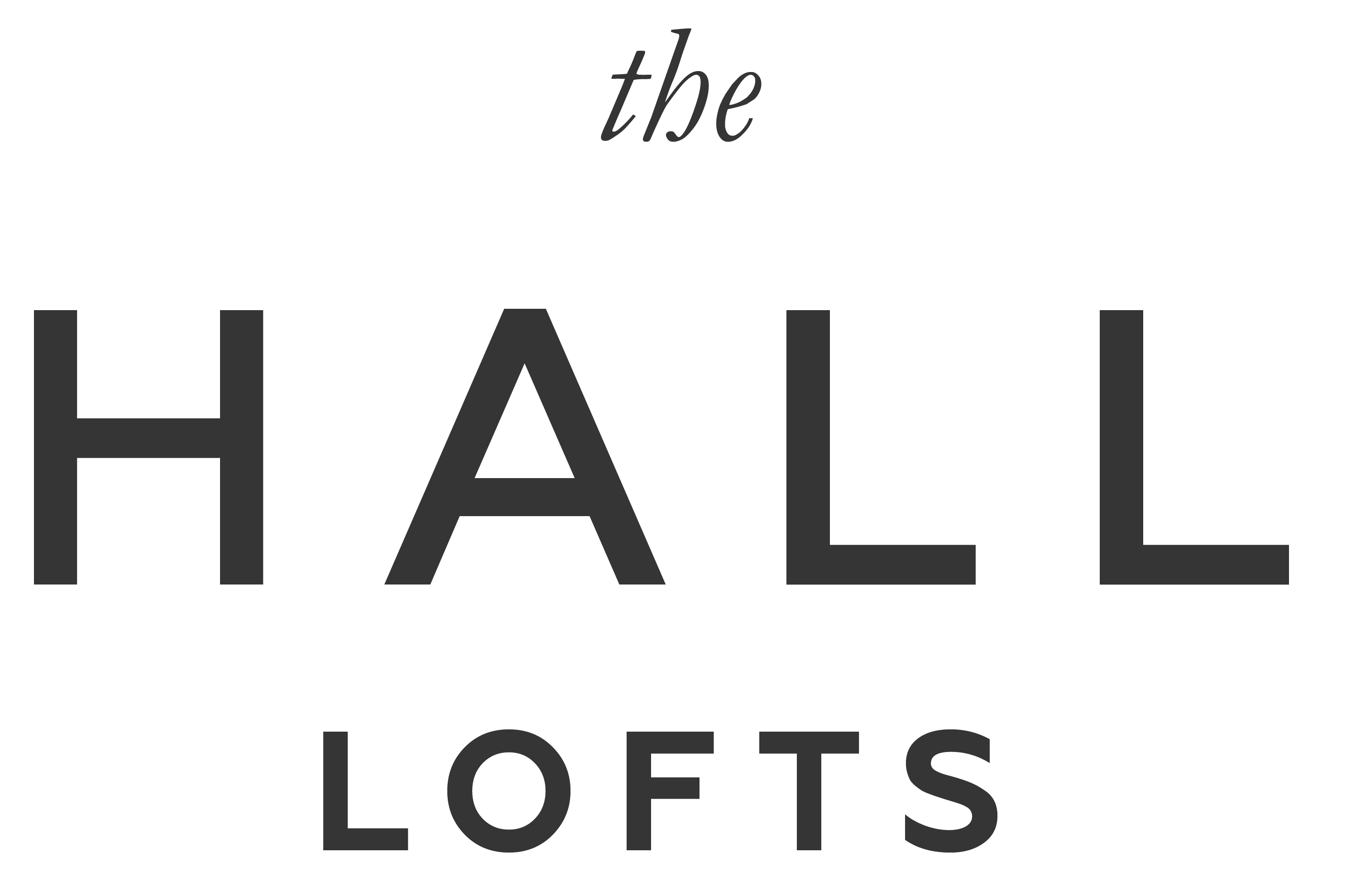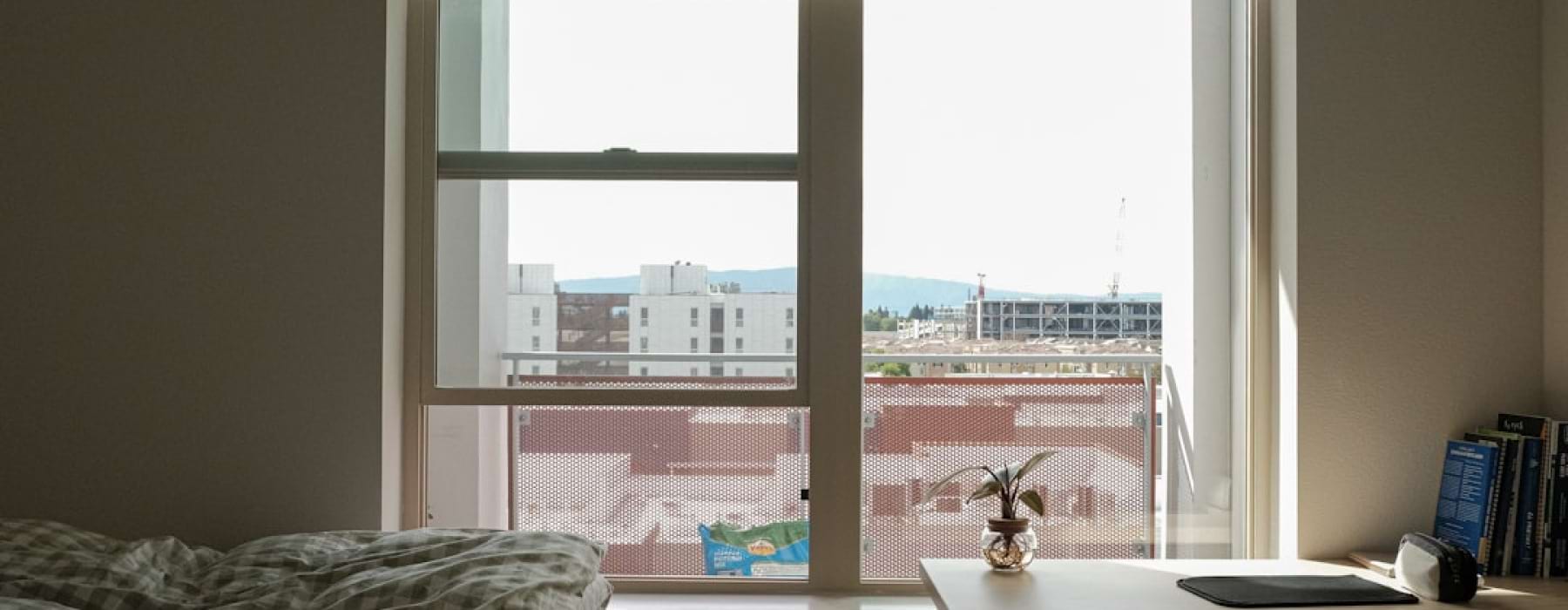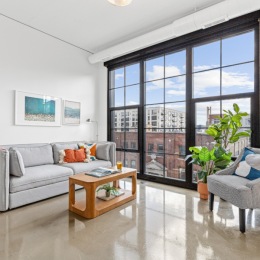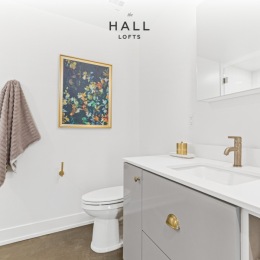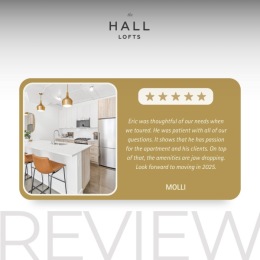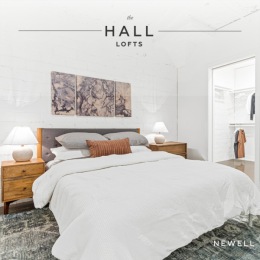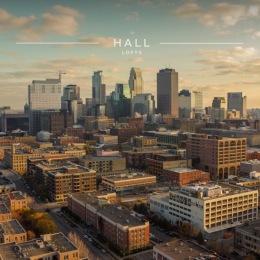Why Downtown Minneapolis is a Destination for 1 Bedroom Living
1 bedroom apartments downtown minneapolis offer a blend of urban energy and modern comfort. With 1,392 one-bedroom units available across the downtown area, a wide selection of homes is available.
Quick Facts for Apartment Hunters:
- Average Size: 694 square feet
- Popular Neighborhoods: North Loop, Mill District, Downtown East
- Unique Feature: 7+ miles of skyway system for year-round indoor walking
- Housing Styles: Historic warehouse lofts, modern high-rises, classic brownstones
Downtown Minneapolis has transformed into a vibrant neighborhood where towering office buildings meet a thriving cultural scene. The area draws residents with its skyway system that connects buildings throughout downtown, allowing for indoor navigation during winter.
Whether interested in exposed brick walls in renovated warehouse spaces or sleek finishes in newly constructed towers, downtown offers diverse living options. The neighborhood provides access to Target Field, U.S. Bank Stadium, and the Mississippi River National Recreation Area - all within walking distance or a short skyway connection.
From the historic character of the Warehouse District to the contemporary appeal of the Mill District, each area has its own personality while maintaining that distinctly Minneapolis character.
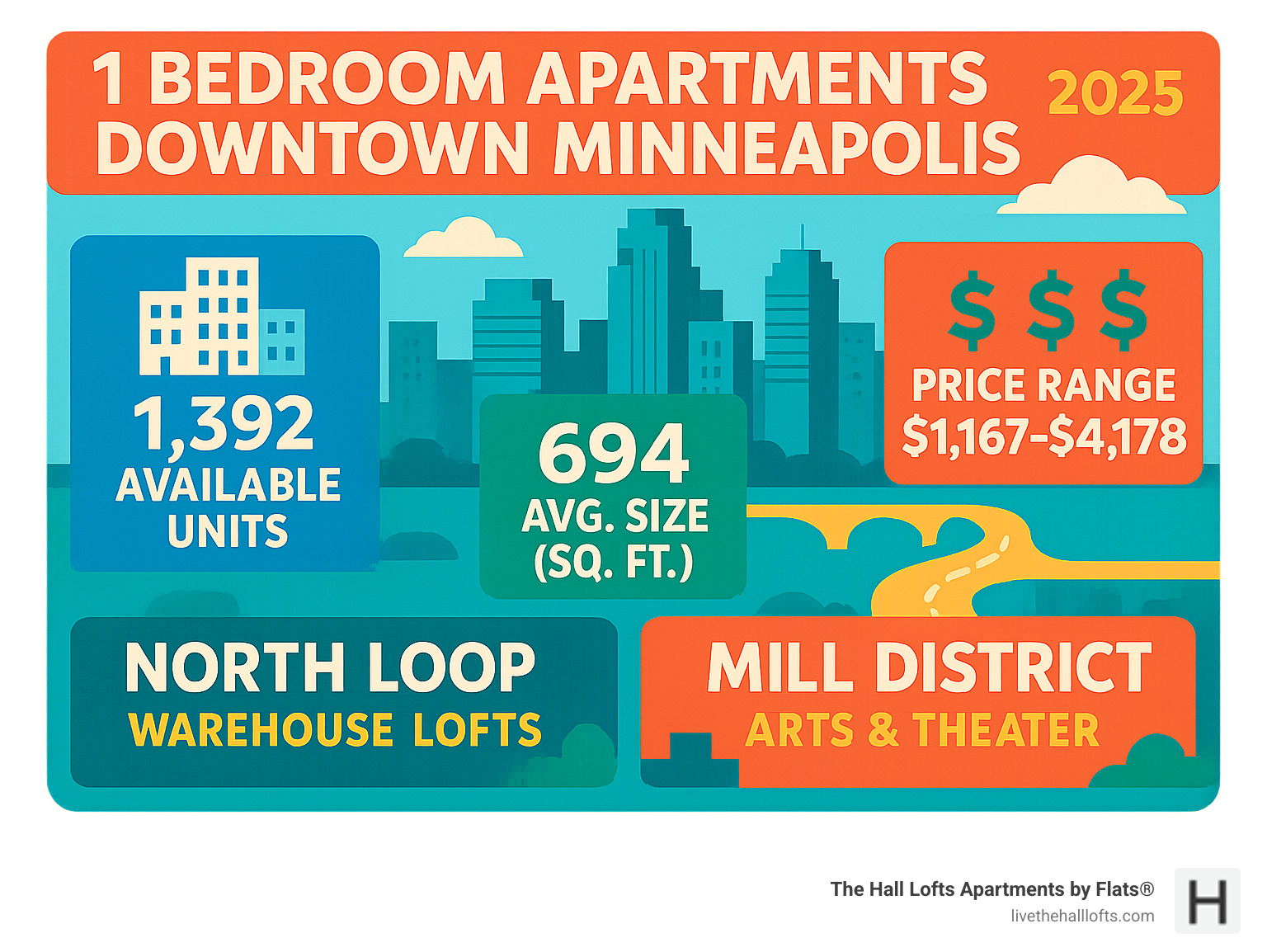
The Downtown Minneapolis Lifestyle: What to Expect
Downtown Minneapolis presents a lifestyle rich in culture, activity, and urban amenities. The area is known for its dynamic atmosphere, where city living thrives amidst a backdrop of arts, entertainment, and natural beauty. Residents have errands, dining, and entertainment venues within reach, often accessible via the Skyway system.
The cultural scene is particularly robust, with institutions like the Guthrie Theater offering cutting-edge drama and the Walker Art Center providing a rich artistic experience. The dining scene is diverse, ranging from casual eateries to upscale restaurants, complemented by a lively nightlife. For outdoor enthusiasts, the Mississippi River National Recreation Area provides opportunities for walking, biking, fishing, boating, and bird watching along its 72-mile park. Numerous city parks, including Loring Park and Gold Medal Park, offer green spaces for relaxation and recreation.
Downtown living is characterized by its walkability. Many areas have high Walk Scores, allowing for navigation on foot. The access to major venues like U.S. Bank Stadium and Target Field means sporting events and concerts are often a stroll away.
Exploring Downtown's Vibrant Neighborhoods
Downtown Minneapolis is not a monolithic entity but a collection of distinct neighborhoods, each offering a unique flavor of urban living.
- North Loop: Often referred to as the Warehouse District, the North Loop is celebrated for its historic character, featuring numerous renovated warehouse buildings that house modern lofts and apartments. It's a hub for eateries, cocktail bars, and boutiques, offering a chic, eco-friendly living experience. The area seamlessly blends its industrial past with contemporary design, creating a highly sought-after residential destination.
- Mill District: Situated along the Mississippi River, the Mill District boasts a rich history rooted in the city's flour milling past. It combines historic landmarks like the Mill City Museum with modern luxury developments. The neighborhood offers a cultured living experience with access to the Stone Arch Bridge, St. Anthony Falls, and the Mill City Farmer’s Market.
- Loring Park: This neighborhood is centered around its namesake park, offering a more traditional residential feel with a mix of classic brownstones and mid-rise buildings. It provides a peaceful urban oasis while still being highly connected to the broader downtown area.
- Downtown East: Described as an expanding downtown neighborhood, East Town offers urban convenience with proximity to major venues like U.S. Bank Stadium and The Armory. It’s a thriving area with a mix of residential and commercial spaces, characterized by its vibrant energy.
These neighborhoods, while distinct, collectively offer access to all that downtown Minneapolis provides, creating a living experience that balances historical charm with modern design.
Explore the Neighborhood Find Downtown Minneapolis on a map
A Hub of Activity Year-Round
Downtown Minneapolis maintains a busy calendar of events and activities throughout the year, contributing to the area's dynamic atmosphere. Seasonal events range from outdoor concerts in the summer to festive markets during the holidays.
The local weekend farmers market, such as the Mill City Farmer’s Market, provides fresh produce, live music, and open-air shopping, fostering a sense of community. The proximity to major sports arenas is a notable feature. Target Field, home to the Minnesota Twins, and U.S. Bank Stadium, where the Minnesota Vikings play, offer access to professional sports and major entertainment events. Residents can find pre-game festivities at nearby establishments and walk to the venues. The Armory also hosts a variety of concerts and shows, adding to the entertainment options. This constant stream of activity makes downtown an engaging place to live, regardless of the season.
Types of 1 Bedroom Apartments Downtown Minneapolis Offers
Understanding the types of spaces downtown has to offer is part of the apartment search process. 1 bedroom apartments downtown minneapolis come in three main styles, each with its own design and features. The variety includes century-old warehouses transformed into homes and brand-new towers.
A feature of downtown Minneapolis is how these different apartment styles create a mix of living options. For those interested in exposed brick walls or sleek modern finishes, an option may be available. This architectural diversity reflects the city's history and its future.
Historic Lofts and Renovated Warehouses
A prominent style of downtown living is the historic lofts found throughout the North Loop and Warehouse District. These spaces, former flour mills and storage buildings, now house some of the most sought-after apartments in the city.
These renovated spaces evoke a sense of Minneapolis history. The exposed brick walls are the original structure of buildings from the city's past. High ceilings often reach 12 feet or more, creating an airy atmosphere.
The large windows in these buildings were originally designed to let in light for workers and now flood modern living spaces with natural brightness and offer glimpses of the streets below. Open-concept layouts are well-suited to these spaces, since the original industrial design already featured wide, uninterrupted floor plans.
Notable details include the industrial design elements that developers chose to preserve. Exposed ductwork, original concrete floors, and structural beams add character that cannot be replicated in new construction. These features create homes with distinct character.
Minneapolis Loft Apartments Downtown Minneapolis Lofts
Modern Apartment Residences
For those interested in sleek lines and the latest in design, downtown's modern apartment buildings offer features associated with contemporary urban living. These residences represent the newest chapter in Minneapolis housing, built with today's lifestyles in mind.
The contemporary design in these buildings focuses on clean, uncluttered spaces that maximize both function and form. Skyline views are often a key feature, with apartments positioned to capture perspectives of the city's growing skyline. Floor-to-ceiling windows frame these views.
State-of-the-art construction means these buildings incorporate the latest in energy efficiency, sound dampening, and smart building technology. Premium finishes are standard, such as granite countertops, stainless steel appliances, and designer lighting fixtures that create spaces for modern living.
These buildings often feature amenities that add to the residential experience.
Classic Brownstones and Mid-Rise Buildings
Another option is something that feels established and timeless. Downtown's classic brownstones and mid-rise buildings offer a different kind of urban living, one that emphasizes community and architectural character.
These buildings often feature traditional floor plans with defined rooms and thoughtful layouts. Unique architectural details like ornate facades, original woodwork, and vintage fixtures create homes with individual character.
Many of these properties include community courtyards or shared outdoor spaces that provide opportunities for neighbors to connect. These spaces provide a quiet garden area steps from a city street. The established residential feel in these buildings creates a sense of permanence and community.
These classic buildings offer an approach to urban living that honors the past while embracing the present. They offer a different style of downtown life, with urban access in a more traditional residential package.
Essential Amenities and Features to Look For
Identifying the right 1 bedroom apartments downtown minneapolis involves looking beyond just square footage and location. The amenities and features that come with modern downtown living can improve daily routines.
Today's downtown apartments have evolved far beyond basic shelter. They are designed to incorporate convenience and community connection. These features create the foundation for urban living.
In-Unit Conveniences for 1 Bedroom Apartments Downtown Minneapolis
In-unit features often add to the convenience of daily life. Modern downtown apartments understand this, which is why in-unit washers and dryers have become a common feature.
Kitchens in these apartments typically feature stainless steel appliances that are both functional and stylish. Many units showcase granite countertops that provide both durability and style.
Storage is a key consideration in one-bedroom living, making walk-in closets a highly sought-after feature. These spaces offer room for various belongings, helping to maintain an uncluttered aesthetic that can create a more open feeling.
Many residents value private balconies or patios. These outdoor spaces, even if compact, provide a personal retreat. Some newer buildings integrate smart-home technology, allowing residents to control lighting, temperature, and security systems with their phones.
Community and Building Amenities
The appeal of downtown apartment living often extends to the shared spaces. Fitness centers have become facilities with a variety of cardio equipment, free weights, and dedicated spaces for yoga or group classes. This provides residents with on-site access to workout facilities.
Rooftop terraces offer some of the notable experiences in downtown living. These lifted spaces often include grilling stations for cookouts, fire pits for evening gatherings, and seating areas that showcase Minneapolis's skyline. Some buildings feature swimming pools that provide a resort-like setting.
Modern work patterns have made co-working lounges and business centers essential amenities. These spaces offer professional environments for video calls, quiet work sessions, or collaborative projects.
Concierge services provide assistance to residents, handling package deliveries, booking reservations, or providing local recommendations. EV charging stations reflect the forward-thinking nature of downtown developments, catering to residents with sustainable transportation.
Considerations for Pet Owners
Pet-friendly living in downtown Minneapolis has evolved beyond simply allowing animals in buildings. Many communities now accept pets as residents, creating amenities designed for them.
Pet-friendly communities typically welcome up to two pets per apartment, with clear policies that help all residents coexist. On-site dog runs provide secure spaces for pets to exercise and socialize without leaving the building.
Pet washing stations address a common need for pet owners. These dedicated spaces include specialized equipment designed for washing pets.
Location is a significant factor for pet owners. Proximity to parks like the North Loop Dog Park or the Mississippi River trails means green spaces are accessible. The downtown area's walkable nature means most green spaces are easily reached on foot.
Some buildings host events that create opportunities for pets and their owners to build community connections. These features contribute to a welcoming environment for all residents, including pets.
Navigating Your Apartment Search
Finding the right 1 bedroom apartments downtown minneapolis can be simplified with knowledge and preparation. The downtown market offers a wide variety, and understanding what to look for can help in finding a suitable home.
Understanding 1-Bedroom Layouts and Sizes
The average one-bedroom apartment in Minneapolis spans approximately 694 square feet, but the layout and design are as important as the total space.
Alcove versus true one-bedroom apartments represent a key distinction. Alcove units are essentially studios with a partially separated sleeping area, creating an open, loft-like feel. True one-bedrooms feature a fully enclosed, separate bedroom with walls and a door, which creates distinct living and sleeping zones.
Open-concept living has become increasingly popular, especially in renovated warehouse lofts. These layouts blend the living room, dining area, and kitchen into one flowing space, which can make apartments feel more spacious.
Some floor plans include bonus spaces like dens or office nooks. These dedicated work areas have become a useful feature, especially with more people working from home. Square footage can range from 540-square-foot units to expansive spaces over 1,000 square feet, depending on the building and specific layout.
The Importance of Touring 1 Bedroom Apartments Downtown Minneapolis
Once potential apartments are identified, touring is an important step in the selection process. Touring provides a direct experience of a space.
In-person visits provide the complete picture. The way natural light moves through windows, the noise levels from neighboring apartments or street traffic, and the condition of appliances and fixtures become apparent during physical tours. Walking through the space allows prospective residents to assess the layout and determine if it suits their needs.
Virtual tours have changed apartment hunting, especially for those relocating from other cities. Many properties offer detailed 3D walkthroughs or comprehensive video tours that showcase the unit. These digital options are useful for narrowing down choices and getting a sense of finishes and layout before scheduling in-person visits.
Self-guided tour options offer a flexible and independent way to view a property. Some buildings offer access codes for independent exploration, allowing potential residents to take their time and revisit spaces.
During any tour, paying attention to details is beneficial. Quality of finishes, functionality of appliances, and available storage should all be evaluated. Observing how light enters the apartment at different times of day can also be informative.
Preparing for the Application Process
Once a desired apartment is found, being prepared for the application process is the next step.
Most applications involve income, credit, and background screening. Having documentation organized and ready, such as identification, proof of income, and references, can help with the process.
It is also important to understand lease agreements before signing. Lease terms can vary, with different lengths and policies available. Reviewing all community rules and policies helps ensure the terms align with lifestyle needs.
Frequently Asked Questions about 1 Bedroom Apartments in Downtown Minneapolis
What is the typical size of a one-bedroom apartment in Downtown Minneapolis?
Most 1 bedroom apartments downtown minneapolis average around 694 square feet, which creates a functional living space. This size can accommodate various living arrangements.
The actual size can vary depending on the building and layout. Some units start around 540 square feet, while more spacious options can exceed 1,000 square feet, particularly those with bonus features like a den or office nook. In downtown living, smaller spaces can often feel larger due to open layouts and high ceilings that maximize the sense of space.
What are some common housing styles available?
Downtown Minneapolis offers a variety of options when it comes to housing styles. Historic lofts in renovated warehouse buildings are popular, featuring exposed brick walls, soaring high ceilings, and industrial design elements that give each space distinct character.
For those who prefer sleek contemporary living, modern apartment residences deliver with floor-to-ceiling windows, skyline views, and premium finishes throughout. These newer buildings often showcase state-of-the-art construction and contemporary design that has a fresh and sophisticated appearance.
There is also a selection of classic brownstones and mid-rise buildings that offer traditional floor plans with unique architectural details. These buildings often feature community courtyards and provide more of an established residential neighborhood feel, appealing to those who appreciate timeless design and a sense of history.
What is the Minneapolis Skyway system?
The Minneapolis Skyway system is one of downtown's notable features - an extensive network of enclosed, climate-controlled pedestrian bridges that connect buildings across more than seven miles of downtown Minneapolis.
This system allows residents to walk between restaurants, shops, entertainment venues, and workplaces year-round, sheltered from inclement weather. It functions like an indoor city above the streets, making downtown living convenient and practical in all seasons.
The skyway system affects the experience of downtown living, allowing for indoor navigation during winter.
Conclusion
Downtown Minneapolis is a notable destination for those seeking a blend of urban activity and modern living. The city's downtown core pulses with cultural attractions, from world-class theaters to riverside parks, creating a lifestyle that is both active and connected.
The variety of apartment styles available means there is a style for many preferences. Historic warehouse lofts offer industrial character with exposed brick walls and soaring ceilings, while sleek modern towers provide skyline views and modern amenities. Classic brownstones add a touch of traditional character to the mix.
A feature of the area is its walkability. The Skyway system allows residents to access restaurants, shops, and entertainment venues year-round. Proximity to Target Field and U.S. Bank Stadium, plus access to the Mississippi River trails, are factors that contribute to the appeal of downtown living.
The Hall Lofts is an example of the living options in this area. These renovated warehouse apartments in Minneapolis' North Loop blend historical character with modern features like in-unit laundry and pet-friendly policies.
Whether drawn to the Mill District's riverside setting, the North Loop's industrial design, or the vibrant energy of Downtown East, finding a one-bedroom apartment can be a straightforward process.
